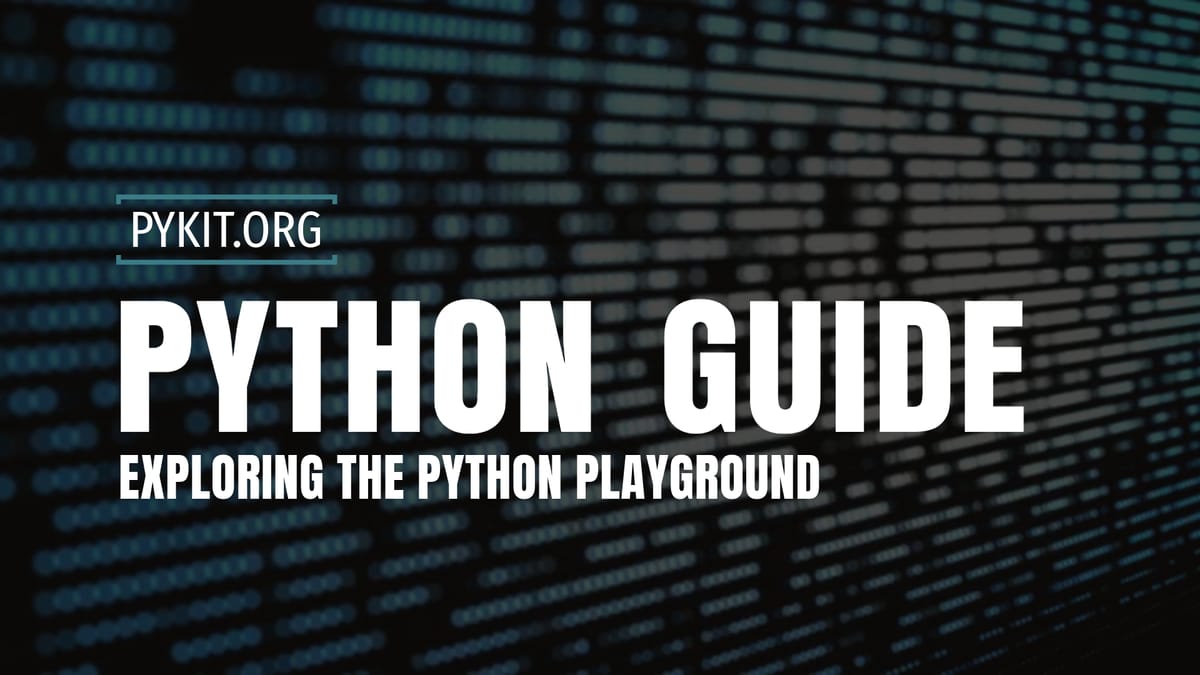Exploring the Python Playground
Explore Python Playgrounds: Engage with code in interactive platforms like Replit, Jupyter, and Google Colab, transforming how you learn and create with Python.

Python, celebrated for its straightforward syntax and powerful libraries, serves as a gateway to the programming universe for many. The term "Python Playground" refers not just to a concept but to tangible, interactive environments where beginners and seasoned programmers alike can explore, experiment, and enhance their coding skills. This blog post takes you through the essence of Python Playgrounds, spotlighting environments that make Python coding accessible, fun, and highly productive.
What Defines a Python Playground?
Python Playgrounds are environments, typically web-based, that allow users to write, execute, and debug Python code through a browser, without the hassle of local setup. These platforms are designed with learning and experimentation in mind, providing features such as instant code execution, interactive tutorials, and the ability to share projects with a global community.
Why Use a Python Playground?
- Accessibility: Start coding immediately, with no setup required.
- Learning and Experimentation: Test out Python syntax, libraries, and frameworks with immediate feedback.
- Community and Sharing: Many playgrounds have features to share your work with others, facilitating collaboration and learning.
Premier Python Playgrounds
Here’s a look at some of the leading Python environments that offer an interactive coding experience:
1. Replit (formerly Repl.it)
Replit is a cloud-based development environment that supports Python and a multitude of other programming languages. It stands out for its collaborative features, allowing users to code in real-time with others. Replit is perfect for beginners due to its simplicity and for educators looking to create coding assignments and projects.
2. Jupyter Notebooks
Jupyter Notebooks offer an interactive coding experience tailored for data science and analysis. Users can mix executable code, equations, visualizations, and narrative text in a single document, making it ideal for presenting data analysis projects and machine learning models. Jupyter's capability to run code in isolated cells allows for immediate visualization and tweaking of code snippets.
3. Google Colab
Google Colab is a free Jupyter notebook environment that leverages Google Cloud's resources. It's particularly beneficial for machine learning, data analysis, and education, offering free access to GPUs and TPUs for intensive computations. Colab’s seamless integration with Google Drive and GitHub makes sharing and collaboration straightforward.
4. PythonAnywhere
PythonAnywhere simplifies the process of writing and running Python code online. It’s a cloud-based IDE that offers a comprehensive Python environment, suitable for developing, hosting, and running Python applications. PythonAnywhere is particularly appealing for web development and small to medium-sized Python projects.
Making the Most of Python Playgrounds
To fully benefit from Python Playgrounds, consider the following tips:
- Explore Different Environments: Each platform has unique strengths, so try out several to find which best suits your needs.
- Engage with the Community: Take advantage of community features to learn from others, get feedback, and collaborate on projects.
- Integrate Learning: Apply what you learn in these environments to personal or work-related projects to reinforce your knowledge.
Conclusion
Python Playgrounds provide a versatile and engaging way to learn programming, test out new ideas, and collaborate with others. Whether you're a beginner looking to learn Python basics or an experienced programmer exploring new libraries, these environments offer the tools and community support to help you achieve your coding goals. Start exploring these Python Playgrounds today and unlock the full potential of your programming skills.



